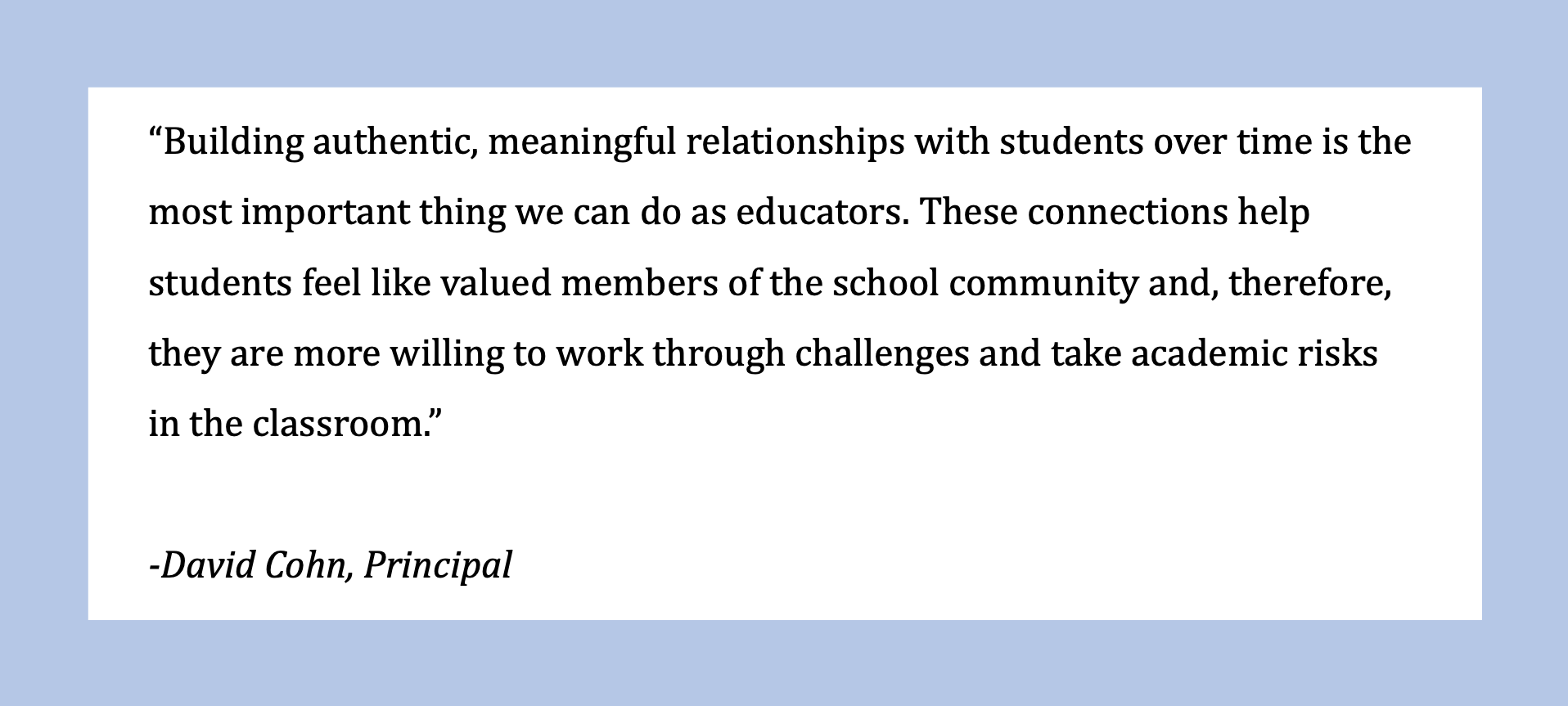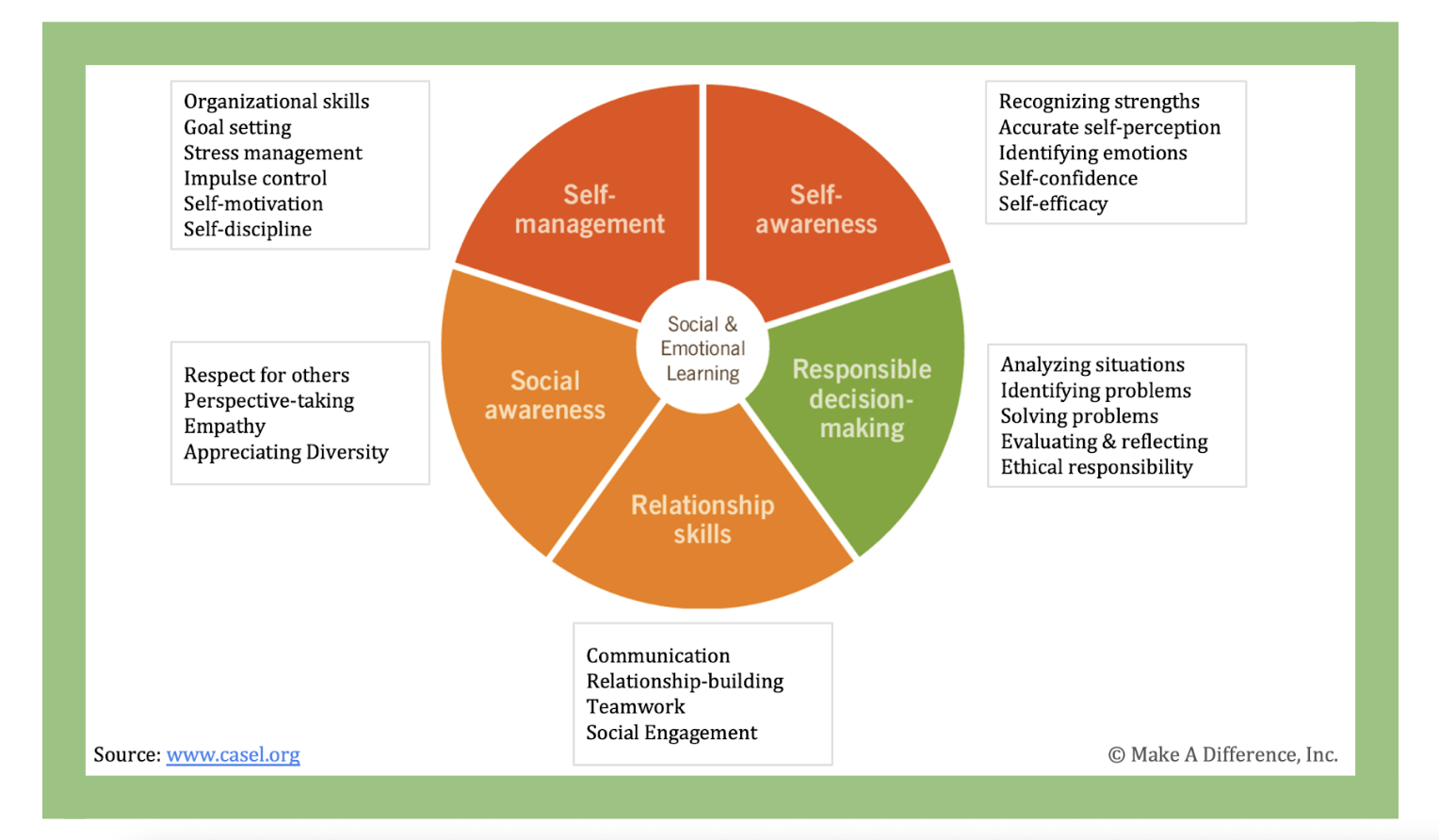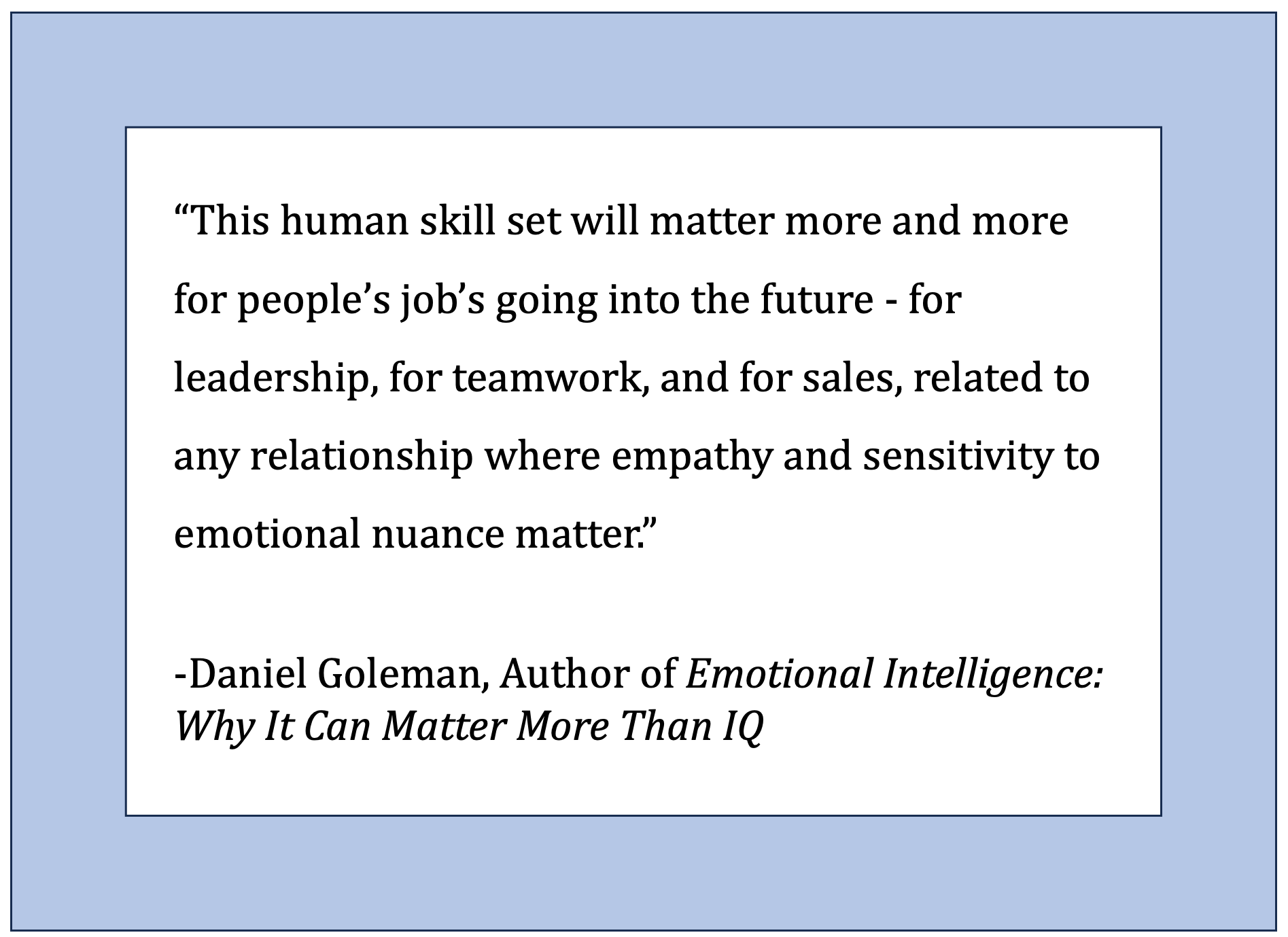

In every aspect of life, it is important to have a balance of expertise and humanity. This applies to leadership, education, multiple work industries, and personal relationships. So, what do these two things mean as it relates to educating our youth and teaching them about the real world?
Expertise is a high level of knowledge or skill set in which you have a deep sense of understanding. Your expertise may set you apart as an expert. In the field of education, this could mean many things. If you are a classroom teacher, you may teach a particular subject that you specialize in or in which you hold a great deal of passion. If you are an educational consultant, you may have developed an expert knowledge base and “teach teachers” to elevate their instructional practice in key areas. Regardless of your specific role in education, your expertise gives the people you serve, both children and adults, confidence that you know what you are doing.
Expertise, however, is not just about what you know or about developing a bank of knowledge from which to draw upon. It is also about knowing how to apply that knowledge in diverse and unique situations. It is what you do with that knowledge that is the game-changer.
To pair with your expertise is your humanity. This is your ability to connect with others and form positive relationships. Your humanity is what engages others to want to listen to you, to believe in themselves, and feel seen and valued.
In education, it is important to remember “connection before content.” Students need to know that they matter and that you want to get to know them individually, really know them, so that you can lift them up to be their best selves.

Whether you have served in education for one year or thirty years, we can guarantee you that those things that you hold dear in your memories are what we call “heart-tug” moments. These moments are times that you see a learner turn the corner in self-confidence and self-motivation related to their social-emotional learning skills. A day in your classroom when you see a poor problem solver make a true, responsible decision. Or, a time when that withdrawn first grader looks up at you with tears in their eyes and says, “You made me believe in myself.”
Emotional Intelligence (EI) refers to the ability to recognize, understand, express, and manage one’s emotions and feelings. Although the term originated in the mid-1980s, it wasn’t until 1995, with the publication of Daniel Goleman’s book Emotional Intelligence: Why It Can Matter More Than IQ (Goleman, 1995), that the theory of EI gained significant attention and became widely recognized. Today, thirty years later, EI has become a core component of hiring, recruitment, and employee training across organizations worldwide, including many Fortune 500 companies. So, why is this important to teach in education?
The answer to this question is that EI equips students of all abilities with the skills to understand and manage their own emotions, as well as those of others. This leads to improved self-awareness, empathy, and social skills – which are essential to both personal and academic success.
The Collaborative for Academic, Social, and Emotional Learning (CASEL), which was founded in 1994, brought emotional intelligence to the forefront of educational practices worldwide. CASEL’s mission is to promote and advocate for evidence-based social-emotional learning (SEL) to be an integral part of all students’ daily school experience.

The CASEL Wheel identifies and classifies essential EI skills, often referred to as “employability” or “career-readiness” skills, into five competency areas: (1) self-awareness, (2) self-management, (3) social awareness, (4) relationship skills, and (5) responsible decision-making. Skills such as recognizing and managing intense feelings, identifying the thoughts and behaviors that go along with them, and demonstrating empathy towards others are crucial EI skills. Also, building healthy relationships and setting personal boundaries are important skills to learn. To develop more emotional intelligence, students need to learn to resolve conflicts respectfully and make thoughtful decisions.
These EI skills help our students to become kind, caring and responsible “humans.” We hope you agree that no one or no thing can teach our students how to become emotionally-intelligent humans, better than us, their human educators! Our experience as educators tells us that these skills cannot be acquired through exposure alone, nor can they be learned by “osmosis.” If this were true, major corporations would not be investing millions of dollars annually to develop and strengthen the EI of their leaders and employees. To maximize the learning of students’ EI skills, we must be intentional and explicit with our SEL instruction, just as we are with our instruction in other academic content areas. This means that we need to purposefully embed EI skills into our daily lessons across all content areas.
Modeling EI skills in relevant ways and taking advantage of any EI “teachable moments” throughout the day will allow students to connect the skills they are learning to meaningful, real-life experiences. And finally, students must have multiple, repeated opportunities to practice their newly acquired skills before they are able to generalize and apply them in their daily lives. This allows them to achieve at their personal best—socially, emotionally, and academically.
So, how do we find time to do this during a busy academic year?
Each day, we walk into our school, go inside our classroom, arrive at our learning center, or enter our therapy setting – and face trying to simply keep our head above water. But, most importantly, as educators, we show up each day trying to make a difference. We attempt to cover an incredible amount of information in an unrealistic (often impossible), limited amount of time. Instruction in today’s educational system is typically delivered in days filled with multiple things to do and just not enough time in which to do them – with people often feeling under-appreciated.
Class sizes are increasing. Caseloads are getting bigger. Lesson-planning time can feel almost non-existent. We rarely get time to collaborate with fellow team members so that we can be on the same page. Our responsibilities are vast, too many in fact to include in this article, but for starters, they most often include: bus duty, replying to numerous emails, planning for lessons, correcting homework and assignments, recording grades, analyzing data to ensure student progress, attending numerous meetings, and of course, on top of all of this – TEACH and support our students.
We do our best to manage these responsibilities, however, with unending To-Do lists on any given day, it seems like all the spinning plates may come crashing down. Because of these challenges, we can be frequently forced to take a reactive approach to instruction, often feeling like we are “flying by the seat of our pants” – as opposed to a proactive one that we feel good about under the umbrella of being prepared and intentional in our teaching (Macomber, 2021).
This significantly affects our stress levels and the joy of teaching. Most importantly, it can impact our ability to connect meaningfully with our students in everyday lessons.
If you are thinking that you are new to the world of Artificial Intelligence (AI) chances are, you’re not. Google Docs, Grammarly, Siri, Alexa, and even Google Maps all function using a form of AI. Many AI tools, which were designed to do what traditionally required “human thinking” skills such as reasoning, problem-solving, and decision-making, have created lots of buzz in today’s workplace due to its ability and potential.
Has the thought of someday being replaced by a form of AI crossed your mind? Regardless of your role in the field of education or your whereabouts – across the U.S., provinces in Canada, the United Kingdom, the Middle East, Africa, and beyond – trust us, you are NOT alone!
Here is some reassuring news. AI can actually HELP to simplify and streamline many of our daily tasks, allowing us to focus on what only we, as “humans,” can do. This includes knowing how to shift and pivot in our teaching, connecting with and developing meaningful relationships with our students, and sharing with them our love of learning to inspire them to become the best version of themselves.
For example, AI tools can assist us with:
So, yes, AI can do all of the above, and so many more time-saving tasks, literally in just seconds. But, the essential question remains: Does AI have the ability to truly “connect” with students in the same way as humans?
You see, AI will never replace the passion, presence, and magic we bring to our classrooms—not now, not ever. Why? Because as educators, we are humans with hearts, and that humanity is the soul of teaching. While AI has its place, it cannot replicate our emotional intelligence, our intuition, or the deep connections we make with our students. As unique individuals, we bring our style to our teaching. We also have our special way of cultivating a safe and supportive learning environment for our students- a place where they “belong.” We foster genuine, trusting relationships with not only our students, but with their families and/or guardians because having these “human” relationships communicates to them that they are important, they are seen and heard, and they are valued- a feeling that they belong.
Providing students with a place where they belong and a feeling that they belong is exactly what “sense of belonging” is all about. In today’s classrooms, more than ever, students need to have and feel this sense of belonging. Educators cultivate this sense of belonging within their students, not AI. You see, AI cannot stand at the classroom door, greeting students with a warm and welcoming smile to start their days positively. We, as humans, give our students security related to the highs and lows of the day – to persevere and work through barriers. This type of human connection is critical for them to believe in themselves to reach their potential.
We get to know each and every one of our students: their interests, strengths, and vulnerabilities, which results in us personalizing our instruction, so that it is “one-size-does-not-fit-all.” We also ensure that each child is not only valued, but that each individual student adds value to their classroom and school community. As passion-driven educators, we show learners of all abilities empathy by “walking in their shoes” and hearing their perspectives. As humans, we model through our tone, body language, and actions. We model what it means to persevere: be vulnerable, have “grit” and be resilient. In sharing our personal experiences with our students, they begin to understand how these important traits will help them learn to set their own goals, have a growth mindset, and achieve at their highest level. Although AI can provide students with definitions and examples of these traits, it cannot, however, provide them with our essential “human” modeling.
Educators have a sixth sense – a unique intuition – that AI does not have. Using our intuition to “read the room” is all in a day’s work and one of the many gifts we bring to education. We notice changes in students’ energy levels, read facial expressions, and are quick to recognize their “lightbulb moments.” Teachers skillfully make “on-the-fly” adjustments to lessons based on real-time student performance and behavior.
We know how and when to take advantage of the “teachable moments” that occur constantly throughout the day. Our unique skill set lets us know when to pause lessons at the drop of a dime. For example, when two students are arguing over materials, we allow time for them to share their perspectives, explain their feelings, and guide them in resolving the conflict. Then, we explicitly remind them of the importance of using the relationship skills of active listening and respectful communication to “build a bridge” instead of “driving a wedge” (Macomber, 2021).
As humans, we can draw from our knowledge base to assess exactly where a student is and the reason they might be stuck. We validate their feelings and provide them with a strategy that is customized to his or her immediate needs. Although AI tools can identify patterns and analyze trends in students’ behavior, it does not have intuition and it can not take advantage of teachable moments such as these.
Out of curiosity, we asked our AI chatbot the following question:
“Can AI actually provide educators with the gift of time by reducing the hours spent on content researching, lesson planning, data collecting, and countless ‘busywork’ tasks?”

Wise words generated by none other than AI-itself!
Teachers foster strong connections with students, creating a positive and supportive learning environment that artificial intelligence cannot do. Although AI can analyze sentiment, it cannot feel. Feelings are the language of the soul. They are at the heart of teaching. We prioritize making a human connection with every child and their family. We create a community which inspires a love of learning and cultivates a sense of curiosity in students.
Educators excel with the nuances of classroom dynamics, diverse learning styles, and cultural contexts – in a way that provides intentional and effective instruction. We are truly skilled at assessing the critical thinking and reasoning skills of learners and are proficient in guiding students in complex problem-solving. We are essential in teaching ethical principles, values, and social responsibility to our youth. These key areas of emotional intelligence and social emotional learning competencies are what make us human. They highlight the unparalleled quality of human connection.
One of our most important jobs as educators is to prepare our students of all abilities for the real-world. Today’s workplaces are seeking employees who have well-developed emotional intelligence skills and are investing millions annually to strengthen the EI of their leaders and employees.

Imagine all the time, efforts, and money that would be saved if we spent quality time during the school day intentionally and explicitly teaching emotional intelligence and social emotional learning skills, within each of the CASEL competency areas, using a “human touch” to better prepare our learners for employment. Good teachers have strong knowledge of their students as individuals, how they think and think about themselves as learners, as well as of their students’ culture and community. They not only understand the subject matter they teach; they understand it in ways that are particular to their work in a classroom.
A moment of humanity in the classroom is illustrated in the following closing story. At the end of a science lesson in a fourth-grade classroom that I, Phyl Macomber, was modeling and teaching, a student by the name of Aiden came up to me and wanted to ask me “an important question.”
Aiden inquired: “What do you think is the most important thing to learn in school, Miss Phyl? The. Most. Important.”
I replied within a second, not needing to think about it, and shared, “To be a good human, Aiden. That is the most important thing to learn.”
Aiden exclaimed with much excitement, “Well, I learn that every day from my teachers!”
Artificial intelligence can NEVER replace this essential human element of teaching. Although it could be a resource to us to save us time by providing endless information and curriculum content, it has no heart. And this is the soul of teaching: HEART. Because connecting with our humanity is what it is all about.
CASEL. (n.d.). What is SEL?. Collaborative for Academic, Social, and Emotional Learning.
Goleman, D. (1995). Emotional Intelligence: Why It Can Matter More Than IQ. Bantam Books.
Macomber, P. (2021). Every Child Can Learn: Your Roadmap to Inclusive Education, Grace & Hope, LLC.